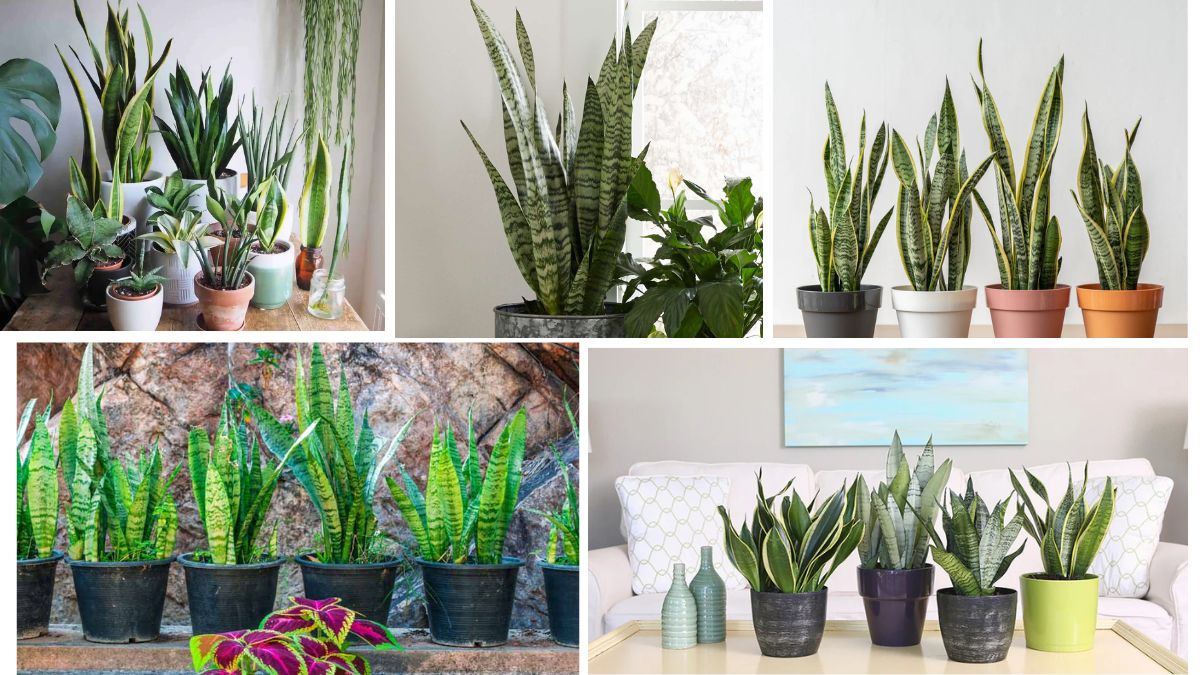The snake plant (Sansevieria), also known as mother-in-law’s tongue, is one of the most resilient and visually striking indoor plants available. With its upright, sword-like leaves and low maintenance needs, it’s a favorite among beginners and experienced gardeners alike. However, understanding its light and water requirements is crucial to helping it thrive for years.
In this guide, we will dive deep into everything you need to know about the light and water needs of a snake plant—explained in practical, beginner-friendly language.
Why Understanding Light and Water Matters
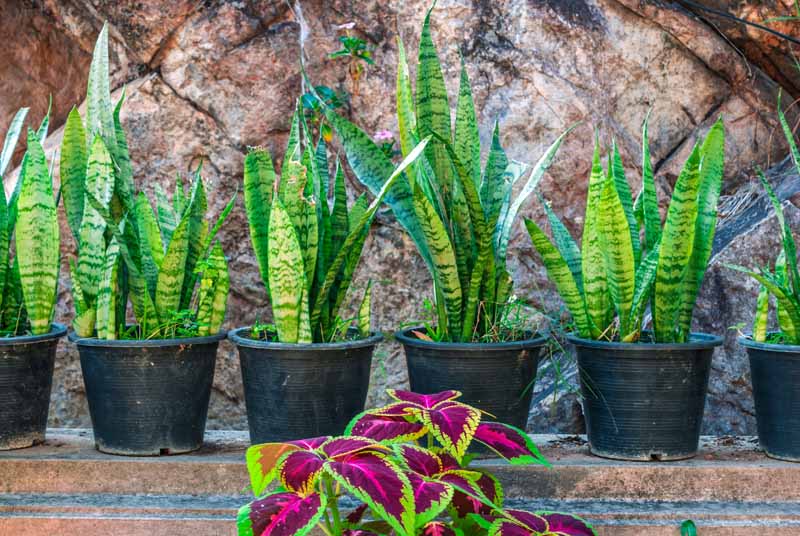
Even though snake plants are considered “set it and forget it” houseplants, neglecting their core needs—light and water—can lead to issues like droopy leaves, root rot, and stunted growth. A snake plant can survive neglect, but for it to truly thrive, you need to replicate its native African environment as closely as possible.
Ideal Light Conditions for Snake Plants
1. Light Tolerance Range
Snake plants are adaptable to a wide range of light conditions:
- Bright indirect light is ideal.
- They can tolerate low light environments such as hallways or offices.
- They also adapt to some direct sunlight, especially morning sun.
2. Best Placement Indoors
Place your snake plant near:
- An east-facing window (ideal).
- A north-facing window (if brighter).
- A few feet away from a south or west-facing window, to avoid scorching from harsh afternoon rays.
Avoid:
- Complete darkness or areas with no windows.
- Direct, intense afternoon sunlight that can burn leaves.
3. Can Snake Plants Grow in Low Light?
Yes, but slower. In low light:
- Growth will slow significantly.
- The leaves may appear darker and thinner.
- Watering needs reduce even more due to less evaporation.
How to Supplement Light Indoors
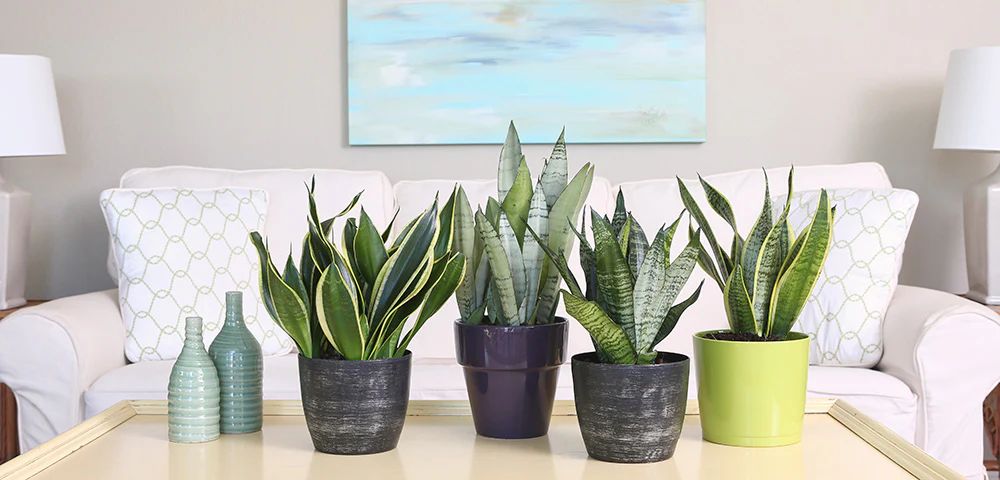
If your room is dark:
- Use LED grow lights with a full spectrum.
- Choose a grow light with at least 1000-2000 lumens.
- Set it to run for 10–12 hours a day for optimal growth.
Watering Requirements for Snake Plants
Watering is where most snake plant owners go wrong—either overwatering or underwatering.
1. Watering Frequency
In general:
- Water every 2–3 weeks during the growing season (spring and summer).
- Water once a month or less during fall and winter.
Always check the top 2–3 inches of soil—if dry, it’s time to water.
2. Best Time to Water
- Water in the morning to give excess moisture time to evaporate during the day.
- Use room temperature water to avoid shocking the plant.
3. How Much Water to Use
- Water thoroughly until it drains from the bottom.
- Never let the pot sit in standing water.
- Ensure the soil is moist but not soggy.
Choosing the Right Pot and Soil
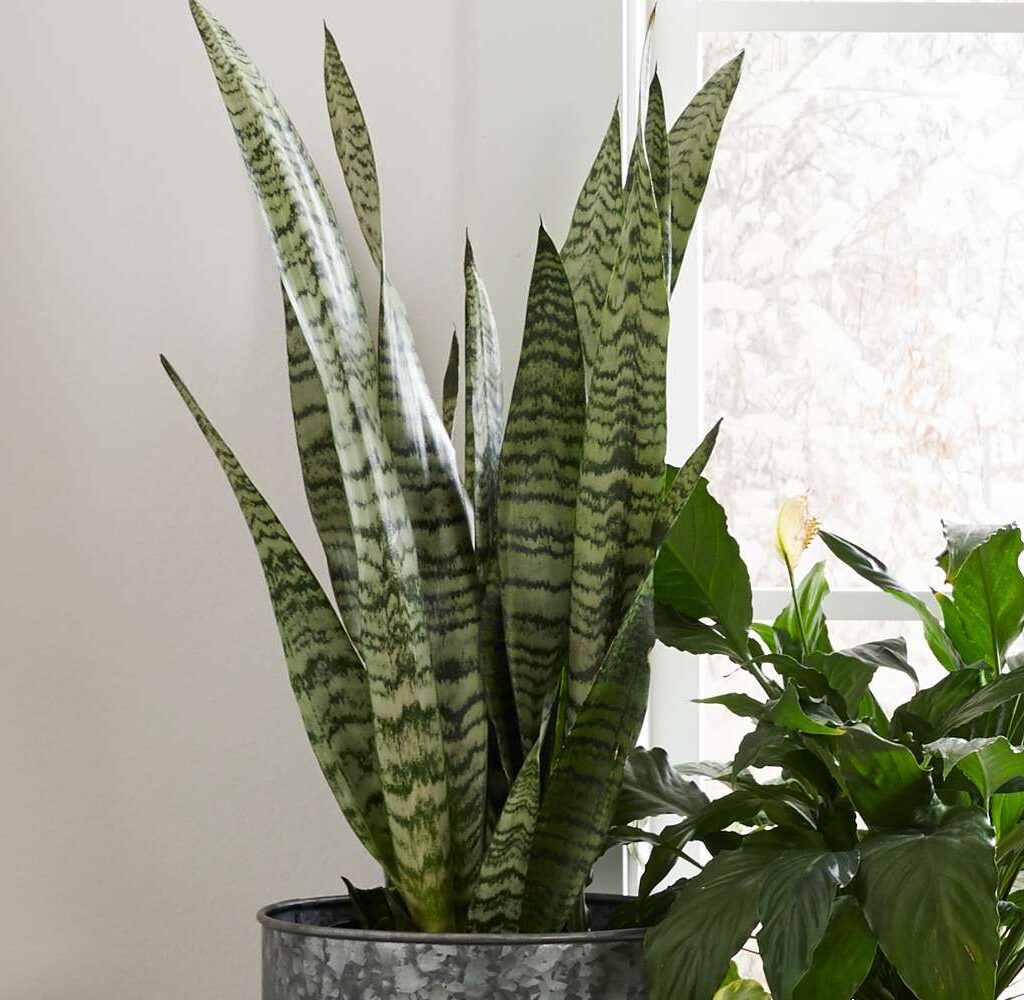
The type of soil and pot can make or break your watering efforts.
1. Pot Requirements
- Use a terracotta or clay pot with drainage holes. These absorb extra moisture and allow air to circulate.
2. Soil Type
- Use well-draining soil such as:
- Cactus or succulent mix.
- A DIY mix of potting soil + perlite + coarse sand.
Avoid:
- Regular garden soil.
- Peat-heavy mixes that retain too much moisture.
How to Spot Watering Issues
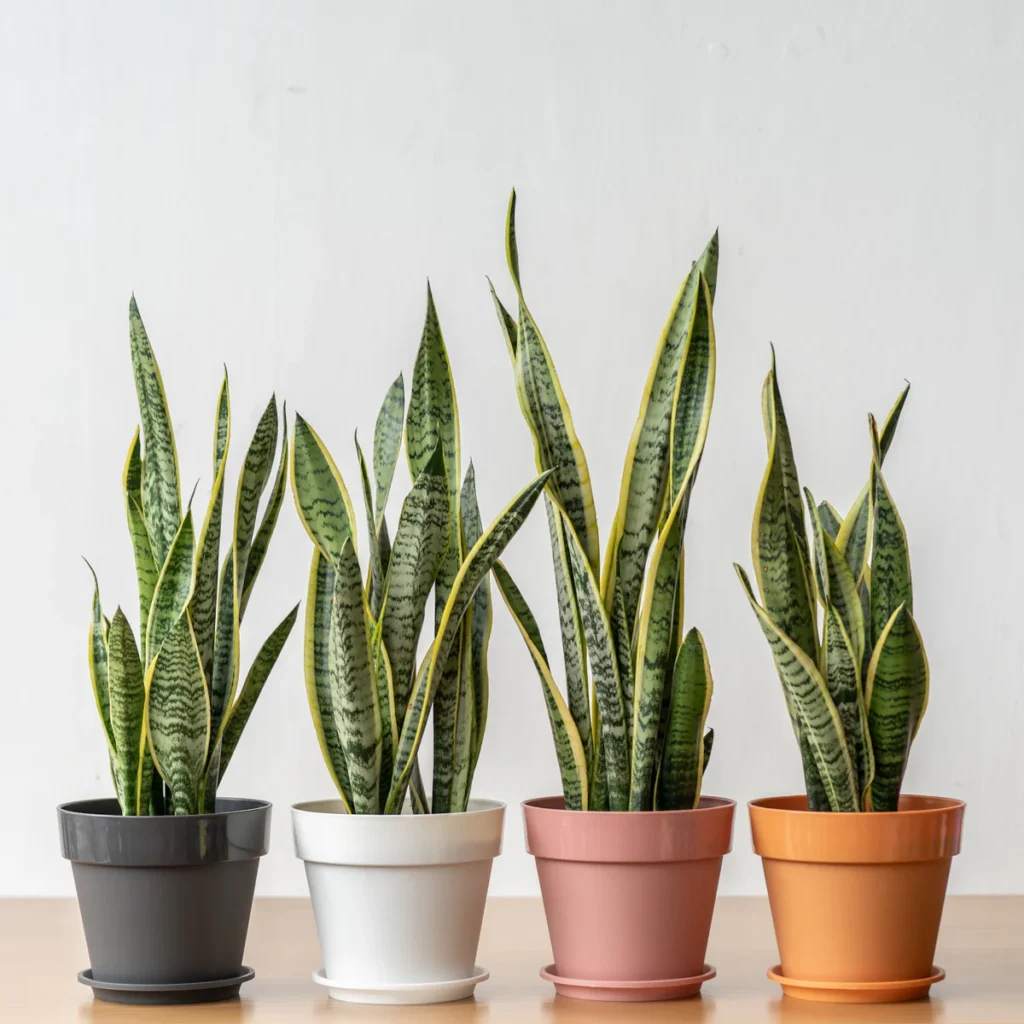
Signs of Overwatering:
- Yellow, mushy leaves.
- Foul odor from the soil (root rot).
- Soft or collapsed leaves at the base.
Fix: Repot immediately in dry, well-draining soil. Remove rotting roots.
Signs of Underwatering:
- Wrinkled, dry, or curling leaves.
- Soil pulling away from the edges of the pot.
Fix: Give it a deep watering and monitor over the next few days.
Seasonal Light and Water Adjustments
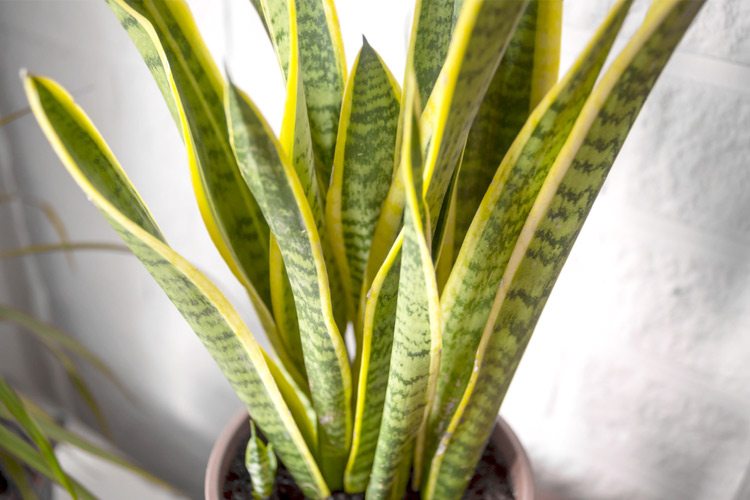
Spring & Summer:
- Snake plants actively grow.
- Increase light exposure and water every 2–3 weeks.
Fall & Winter:
- Growth slows down.
- Reduce watering to once a month or less.
- If light levels drop, consider moving your plant closer to a window or adding a grow light.
Special Indoor Situations
1. Office Spaces
- Use artificial light if natural light is limited.
- Reduce watering since evaporation is slower in air-conditioned environments.
2. Bathrooms
- Snake plants can tolerate humidity.
- Ensure the bathroom receives some natural light or add a small LED grow light.
3. Bedrooms
- Ideal if placed near a window.
- Snake plants purify air and release oxygen at night, making them great bedroom companions.
Common Mistakes to Avoid
- Using pots without drainage holes: Traps water and leads to root rot.
- Watering on a fixed schedule: Always check the soil first.
- Placing in direct scorching sunlight: Causes leaf burn.
- Using dense or non-aerated soil: Promotes root rot.
- Neglecting to adjust care with seasons: Leads to over- or under-watering.
Summary Table: Snake Plant Light & Water Needs
| Feature | Requirement |
|---|---|
| Ideal Light | Bright indirect sunlight |
| Tolerable Light | Low light, filtered morning sun |
| Avoid | Harsh direct sun, complete darkness |
| Water Frequency | Every 2–3 weeks (spring/summer), less in winter |
| Check Soil | Top 2–3 inches should be dry before watering |
| Soil Type | Well-draining cactus/succulent mix |
| Pot Type | Terracotta or any pot with drainage holes |
Final Thoughts
Snake plants may be hardy, but with the right balance of light and water, they can become lush, vibrant showpieces in your home. By understanding how your environment affects these two key factors, you’ll give your plant exactly what it needs to grow healthy and strong.
Keep your snake plant near a window with bright, indirect sunlight, and only water when the soil is dry. When in doubt, less is more—this drought-tolerant plant prefers dryness over dampness.
With these tips, you’re well on your way to growing a thriving, low-maintenance beauty that brightens your home while purifying your air.
